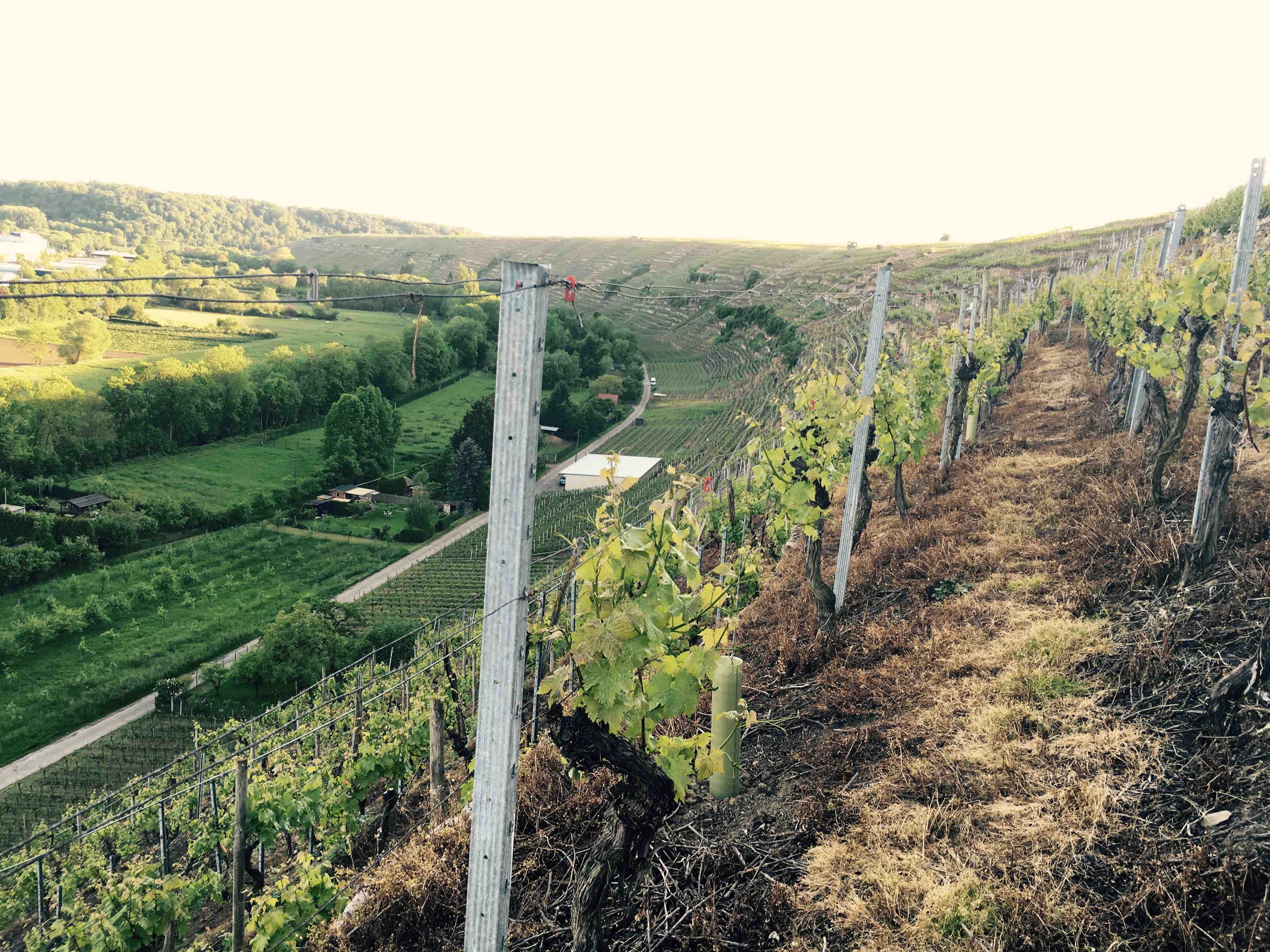This was one of a series of articles published by The Buyer last summer looking at the ‘other grapes of Germany’. If you are going to today’s Wines of Germany tasting then here are some alternatives to Riesling to check out.
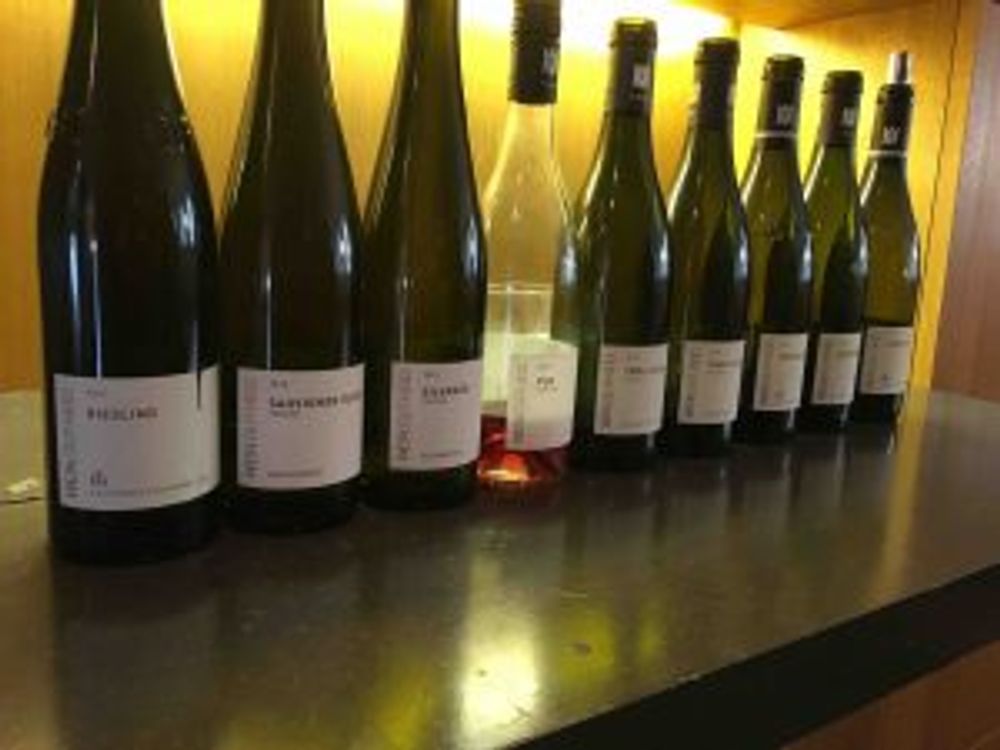
The wines that got us journalists reaching for our wallets
There is a point on most press trips where the fairly rigid set of decorum that is being followed, starts to break down. Usually this unravelling takes place around one ‘bad apple’ or rude journalist. On the ‘other grapes of Germany’ trip, the point at which the journalists stopped behaving like journalists and the goalposts got moved came at lunchtime at Weingut Heid on the outskirts of Stuttgart.
We had just eaten a local delicacy – a sort of dumpling within a dumpling – and started tasting Markus Heid’s wines.
Us journalists all looked at each other, jaws hitting the table. The wines on show weren’t just good these were unbelievable. First a rosé called Pur made from Trollinger, then Weissburgunders, Lembergers and Spätburgunders.
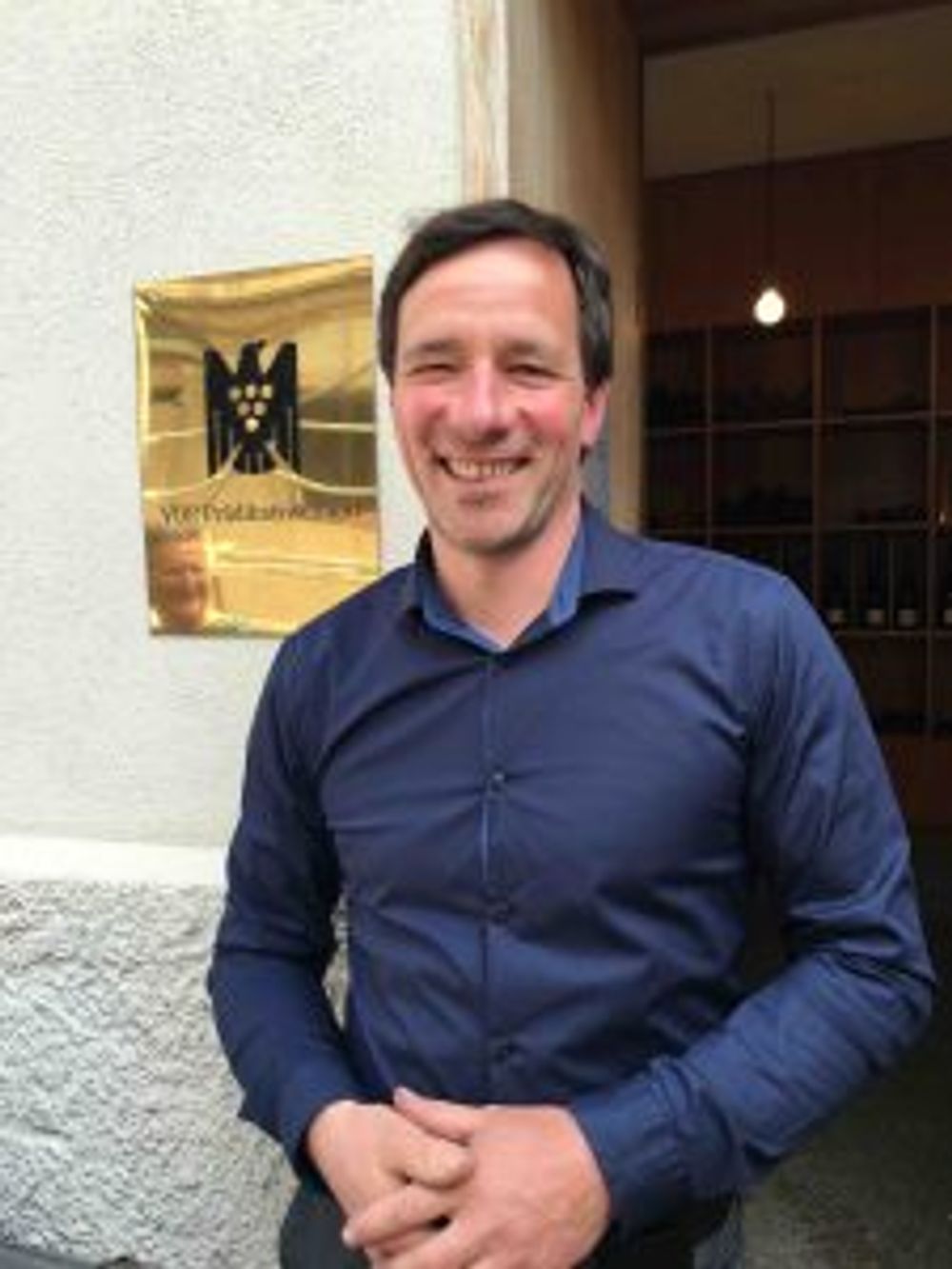
Markus Heid – having just loaded up the press bus with cases of his wine
“Er… do you mind if we buy some of these wines?” one journalist asked with hand raised aloft, “we don’t want you to gift them to us but is it OK if we buy?”
And so it was that us journalists stopped being writers and started being consumers.
Half an hour later 13 ’neutral’ journalists from 10 countries all got back on board the bus arms laden down with boxes of wine, most calculating that even if we had to pay excess on the baggage flying home, it will have been worth it. Heid’s wines are first class.
Don’t mention the Riesling!
There’s something almost perverse about taking a wine tour of Germany and not tasting Riesling. It’s like doing Beaujolais and saying “You know, what else do you have apart from Gamay?”
This was the difficult, but ultimately genius idea, behind a trip to discover ‘the other grapes of Germany’. It might sound a daft idea but then in the Neckar valley alone there are over 90 different varieties of grape. No kidding. And the Neckar valley was just one of many wine-making areas we visited in the two German regions of Rheinhessen and Württemberg.
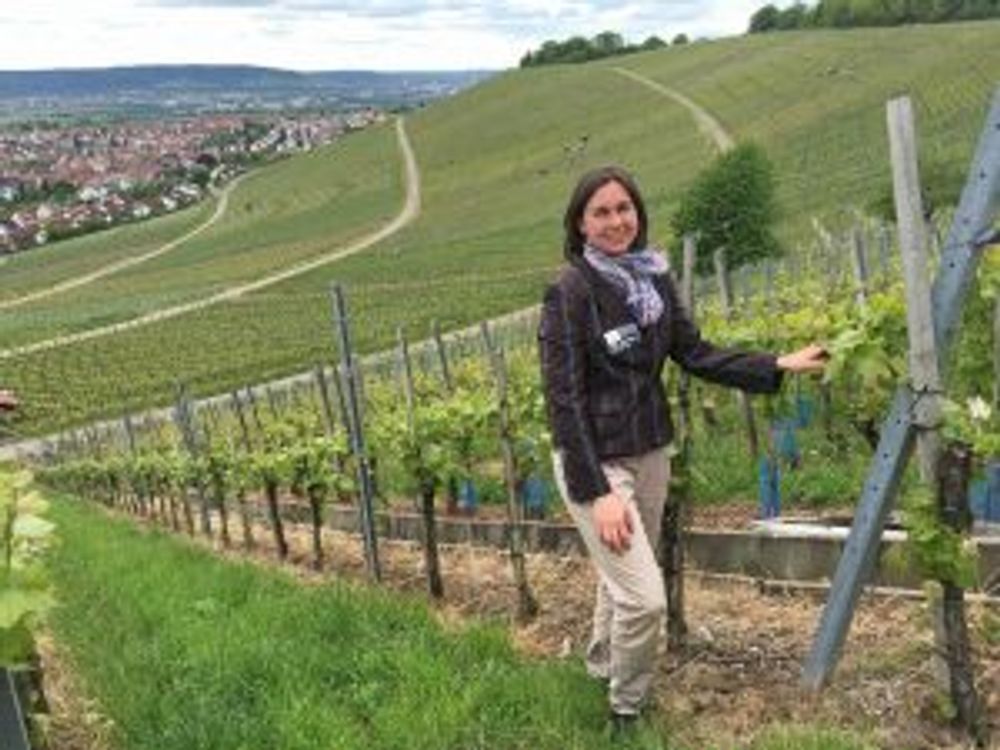
Barbara Singer of Weingut Singer in the Neckar Valley, where there are over 90 varieties of grapes grown
And isn’t it bizarre that 450 miles from Calais, you can make genuine discoveries, not only of grape clones you didn’t know existed, but of wine styles, wine makers and a quality that is simply world class.
On our press trip we visited 12 producers and tasted many, many wines (most of these produce upwards of 12-24 wines and some 30-40 wines) and on what we saw and tasted I think this area offers the world wine trade an enormous and exciting opportunity, particularly on a quality to cost ratio.
There were four genuinely world class producers – Weingut Thörle, Weingut Heid, Weingut Winter and Weingut Dautel – that we will cover in more detail in separate posts. These wine makers were in a separate league and making wines that, if they haven’t already been picked up by leading wine buyers and sommeliers, will soon surely be doing so.
On the trip we visited 12 wineries of which nine were independent, two cooperatives and one a cross between the two with a wine institute attached.
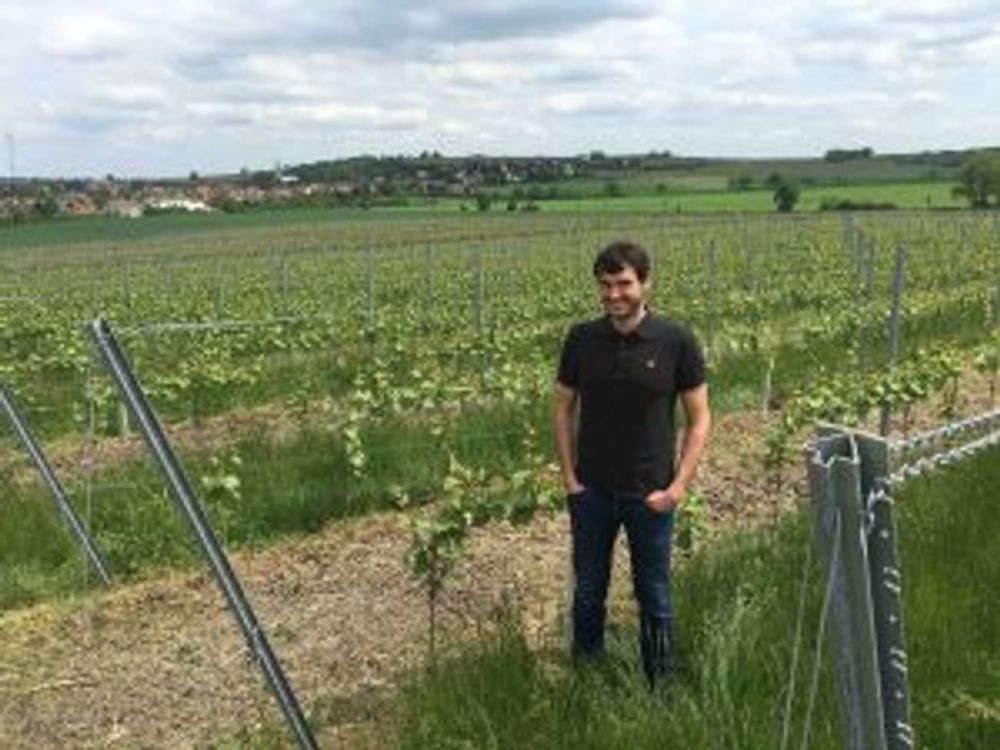
Stefan Winter making world class wine in Rheinhessen
Some of the main things we learned on the trip:
The grapes
There are simply so many German varieties of grape. Centuries of cross-breeding the vines to combat ever-present disease, a hugely varied national palate that is demanding new wines and a unique distribution model, has meant that there are a large number of wines from popular indigenous grapes that never see the light of day outside Germany.
The climate
Global warming is affecting the types of grape that can be grown in Württemberg and Rheinhessen (more international varieties such as Cabernet Sauvignon and Merlot are surfacing). The increase in temperature is having a beneficial effect on preventing the amount of disease in the vineyards, although the problem is that global warming isn’t an overnight phenomenon so that one year there is less disease and then another year, muggy conditions are aiding the widespread Drosophila Suzuki fly.
The wines
There were many, many good wines on show that took all of us jousnalists a little off-guard. Many, such as the hugely popular Trollinger, I cannot see being taken seriously by the UK, particularly in its sweeter manifestations. But the three wines that stood out were:
- Weissburgunder (Pinot Blanc) from Thorle, Hide, Winter and Dautel in particular were world class.
Dautel has spent some time training with Comtes Lafon and you could tell – his wine had a structure and authority about it that was streets ahead of a lot of Pinot Blanc I’ve tasted. Winter even keeps back his Weissburgunder for the on-trade for up to six years so it can be drunk when it is best to. A 2010, pure golden delight of a wine was €10 a bottle. Unbelievable.
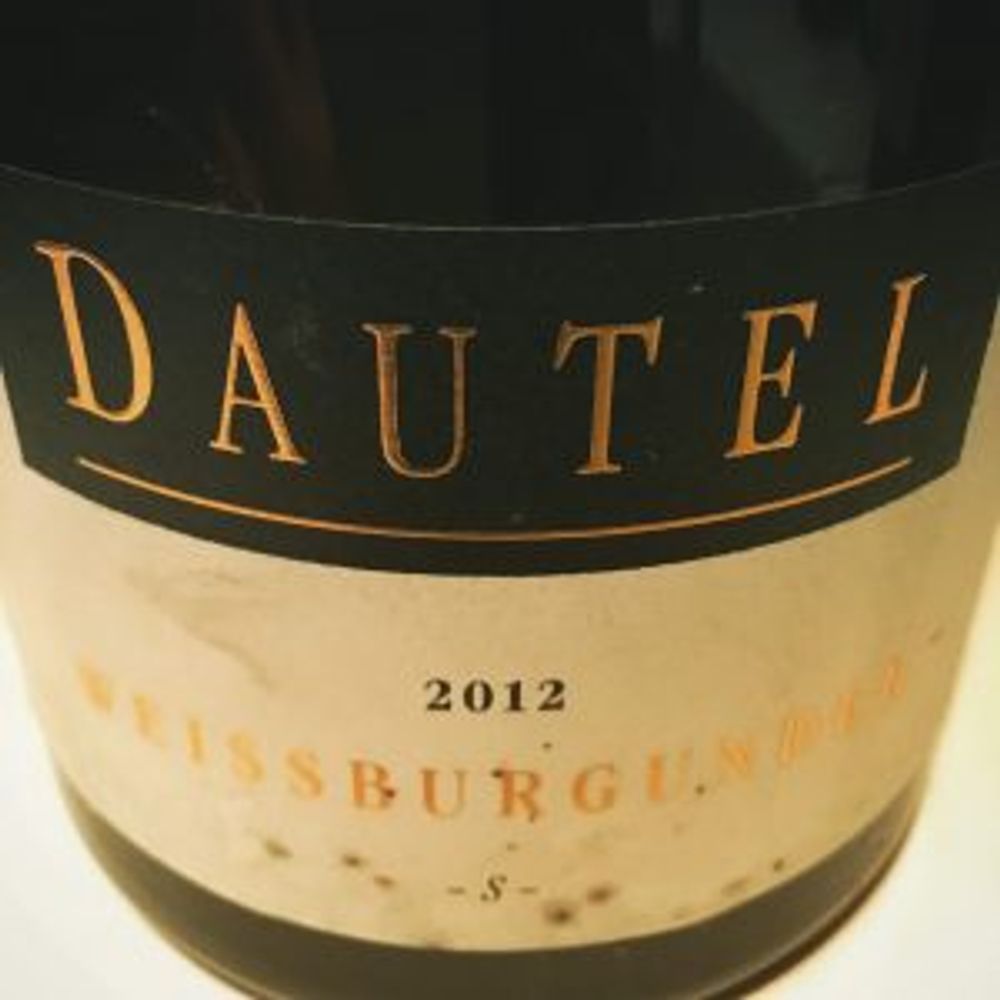
- Spätburgunders (Pinot Noir) from the same producers (some of them calling them Pinot Noir on the bottle for the international market) were world class. It was Hide’s Pinots that got us journos reaching for our wallets, Winter’s were superb and Thorle’s probably best known, having been served to the Queen. I cannot stress enough what an opportunity these wines are for the UK and other international markets, especially given what the prices are doing in Burgundy, just 200 miles South West from this German region.
- Lemberger was arguably the biggest discovery of the trip. This is the same grape as the Austrian Blaufränkisch, that can only be given grand cru status in Württemberg. These wines have it all – fruit, minerality, power, poise, body, elegance. Rarely has the old adage ‘iron fist in a velvet glove’ seemed more apt. Anne Krebiehl MW elsewhere on this site has talked of what a well-kept secret it is. See here.
- Sekt Often derided as being poor quality, some of the quality sekt we tried were outstanding. Crisp, dry, linear, well structured. And cheap as chips. There is a real case here for serious re-evaluation.
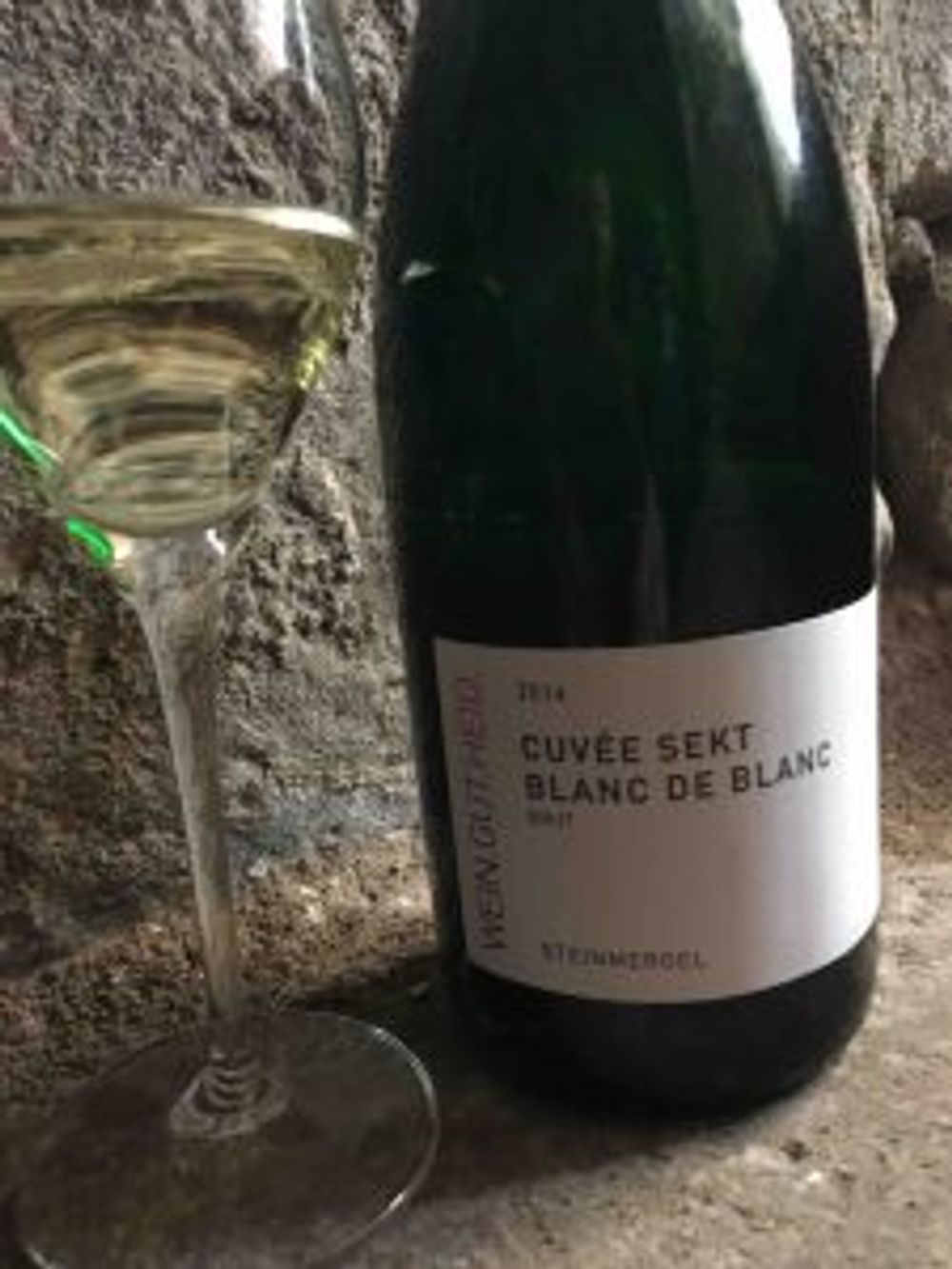
Availability
Quite bizarrely most of the wineries we visited are not exporting wine to the UK, or anywhere else for that mater. And even more bizarrely they have no intention of doing so. Heid attends ProWein, for example, but doesn’t currently have the capacity or the will to increase production by any great extent. That is not to say these winemakers will not change their minds, which is good news for savvy wine buyers looking to forge some links.
The cooperatives
The German cooperatives have in the past been responsible for bringing German wine into disrepute. Liebfraumilch. Say no more. But again, times are changing.
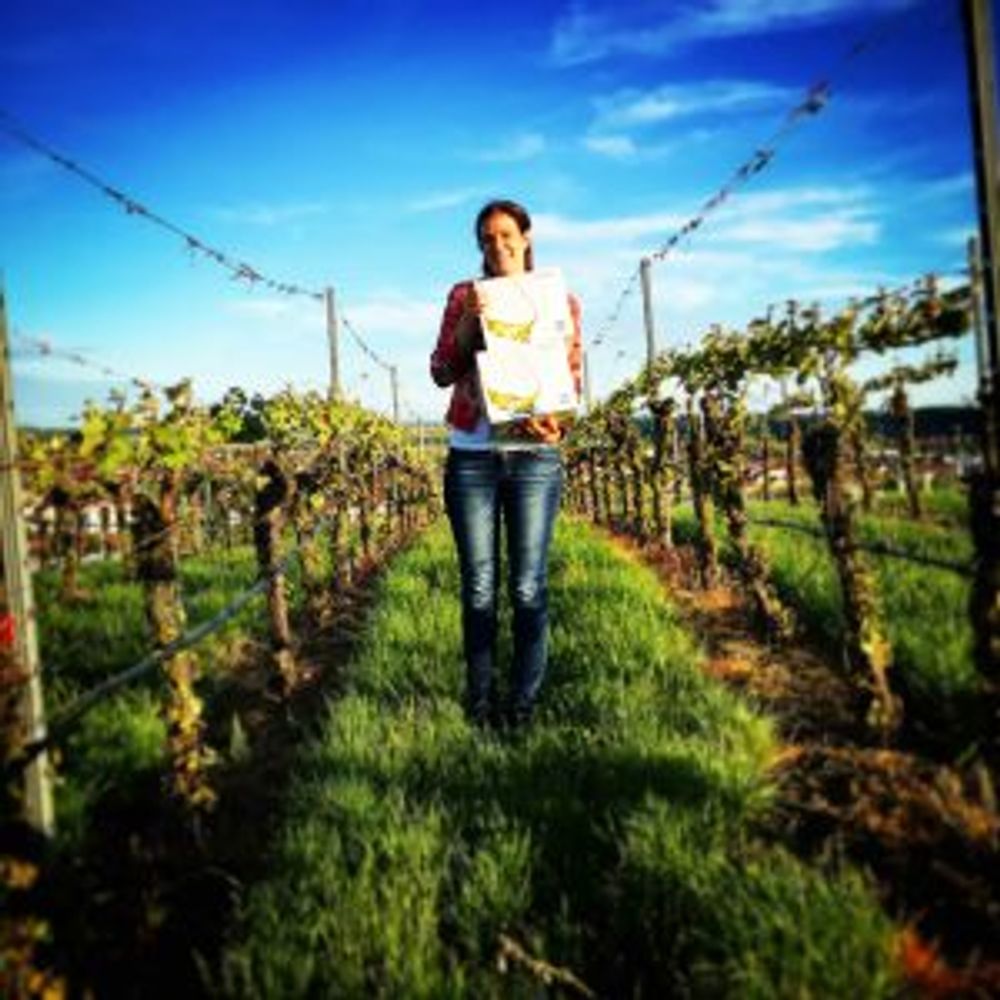
An impromptu wine-tasting in the Trollinger vineyards at Lauffener Weingärtner
The two cooperatives that we visited, Lauffener Weingärtner in the Neckar Valley and Weinmanufaktur Untertürkheim in the outskirts of Stuttgart are producing a wide variety of wines, most of a very high standard indeed.
Cooperatives have developed in these parts due to the large number of smallholders growing grapes on tiny allotments, in much the same way that the Portuguese still do with the Albarino, and selling them onto the cooperatives. New technology and a younger generation of winemakers are turning the stereotypes on their head, and making not just passable but high quality wines – using both indigenous and international grapes.
The value
I have always been a massive fan of German riesling and think that the cost to quality ratio is better than in most wines anywhere in the world. The Other Grapes of Germany press trip opened my eyes to this cost/ quality ratio being applicable for many more grapes and for many more wines.

An outstanding horizontal tasting at Weingut Thörle
